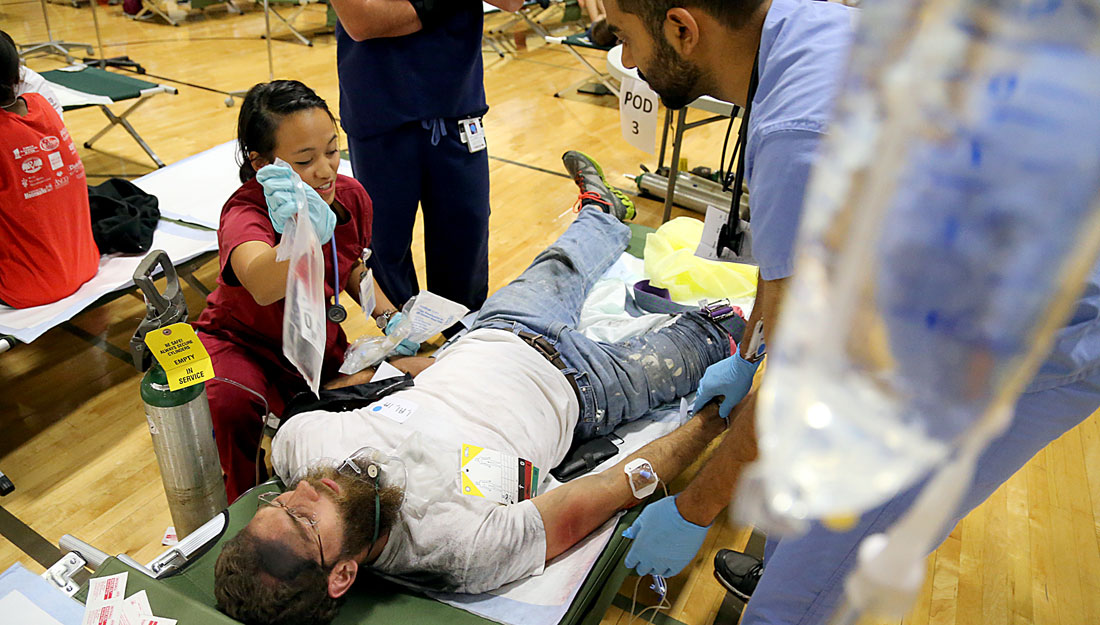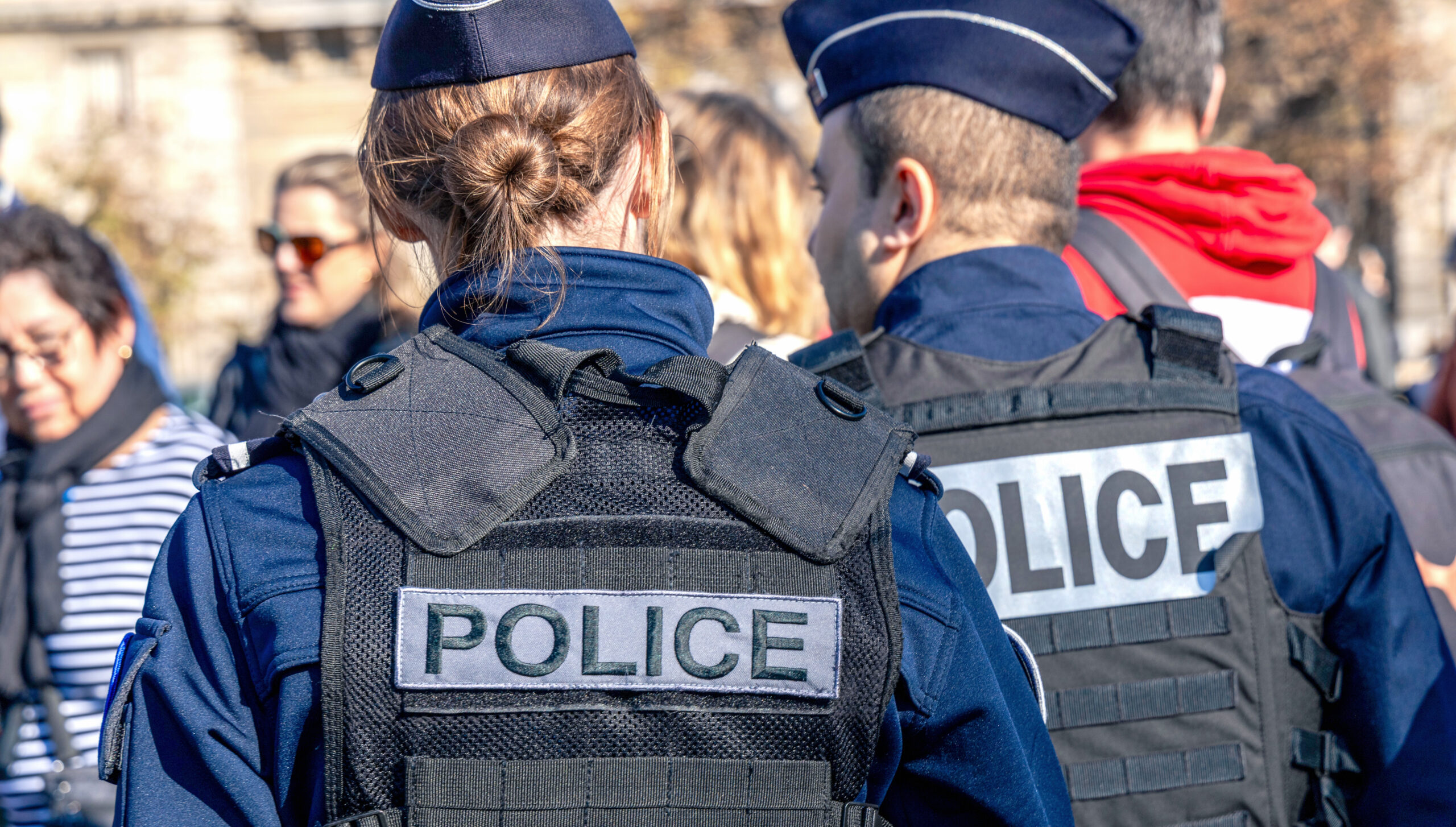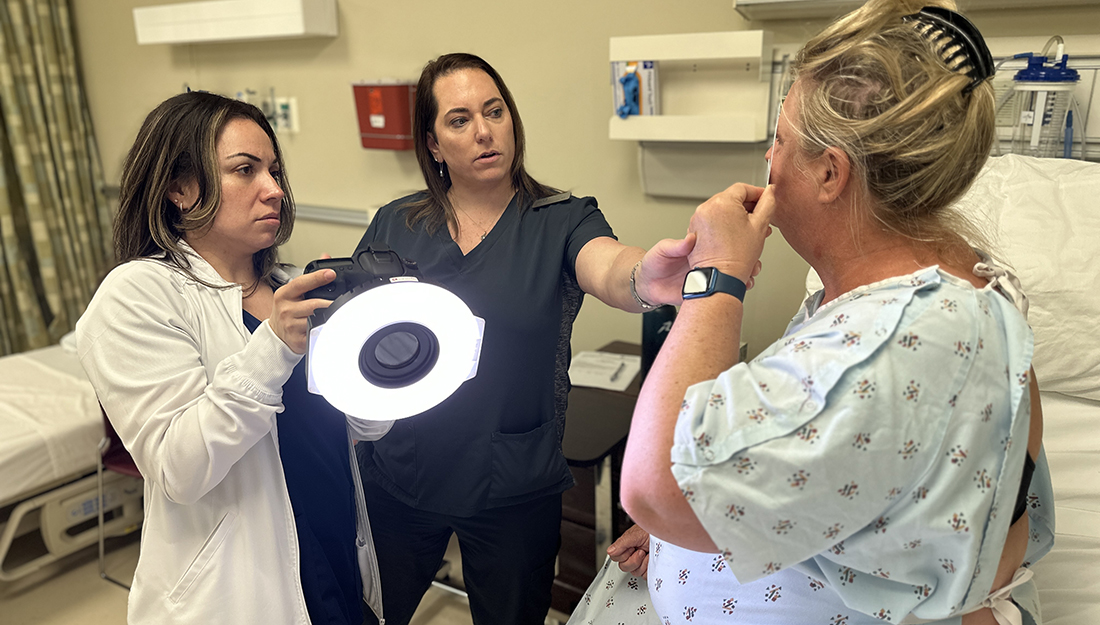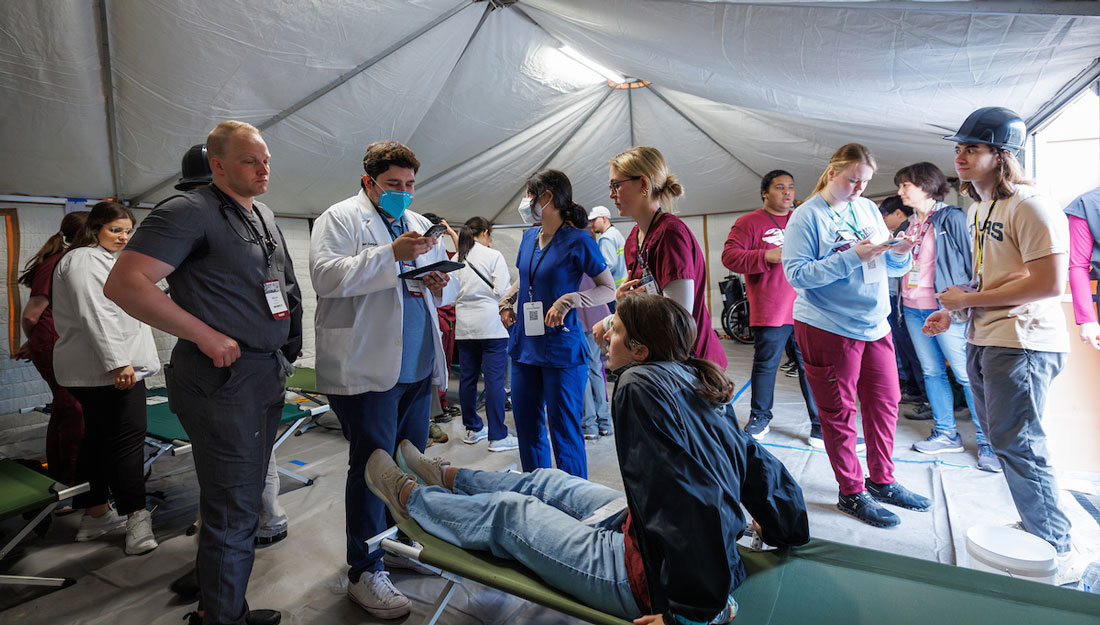- Diane L. Oswald
- Editor's Pick, Nursing, Show on VR homepage
Preparing for disaster: A real-life catalyst for mass casualty planning
Future health care professionals gain valuable experience while dealing with a mock emergency

Just one month after Hurricane Katrina devastated New Orleans in 2005, Hurricane Rita had Texas in its sights. As a result, more than 3 million Texas gulf-area residents were evacuated before the storm made landfall, making it the most extensive evacuation in the history of the United States.
For six days in September 2005, the Large Animal Teaching Hospital on the Texas A&M University campus was transformed into one of the largest human hospitals in the state, housing more than 650 Houston and Galveston-area patients, their families and caregivers. Hundreds of faculty, staff, students and community members volunteered to assist in basic and medical care for these patients.
Margaret Bosenbark was one of those volunteers. In Bosenbark’s second week of nursing school, one of the elderly patients got out of her cot, stood and then collapsed. She suffered a cardiac arrest. Margaret and a few of her classmates began cardiopulmonary respiration (CPR) as other volunteers searched for an automated external defibrillator (AED) and called for an ambulance.
The patient was not responding to CPR, the AED could not be located and volunteers were unsure of where to instruct the ambulance medics to enter the building.
“We were there to provide basic patient care. There were no procedures or plan on how to respond to medical emergencies within this setting,” said Bosenbark, who is now a clinical assistant professor and co-faculty advisor of the Texas A&M Health Science Center College of Nursing’s Disaster Day. “The ambulance arrived and transported the patient, but that experience started the conversation on how we can prepare to apply our knowledge to support all levels of patient care in altered environments.”
Preparing for the worst
Created by the Texas A&M College of Nursing, Disaster Day is a one day, student-led interprofessional event that brings together students from the Texas A&M Health Science Center Colleges of Nursing and Medicine, School of Public Health and the Irma Lerma Rangel College of Pharmacy, and hundreds of community volunteers. In the past, volunteers staged hurricane, chemical fire, explosion and wildfire scenarios with mass casualty simulations that bring interdisciplinary student teams together with community organizations to diagnose, treat and care for simulated patients (SPs). Now in it’s ninth year, this year’s “disaster” was a train derailment in downtown Bryan.
All SPs receive training on how to convey information about the specific injuries and illnesses that they have been assigned, and makeup is applied to create mock injuries so the cases seem more realistic. Students learn about working together on an interdisciplinary team, how to prioritize cases and how to treat patients under less-than-ideal conditions.
“Disaster Day gives students an opportunity to engage in large-scale scenarios where structure has been diminished and resources are scarce,” said Martin Mufich, clinical assistant professor at the Texas A&M College of Nursing and co-faculty advisor of Disaster Day. “It helps all participants, from students to health professionals to think about how we can improve patient outcomes, even when we and our systems are overwhelmed.”
Coordinating Disaster Day is a huge undertaking, with more than 500 volunteers working to ensure that almost 250 future health care providers have an engaging learning experience throughout the simulation. Five student committees lay most of the ground work for the annual event coordinating fundraising, supplies, case studies, volunteers, public relations and moulage (the art of applying mock injuries for the purposes of teaching health care workers how to treat specific wounds). With almost 800 student and community participants, the College of Nursing’s Disaster Day is arguably the largest student-led disaster event in the nation.
“The scenario, the individual simulated cases and the realism in how the injuries are mocked-up create a very real experience for students,” Bosenbark said. “After an exhausting, emotional time participating and observing throughout the day, we debrief with students so they can reflect on how they and their classmates responded. It is rewarding to hear how the exercise made them think differently about their roles, how to work with others and how to prioritize what is truly important when there is overwhelming need.”
From simulation to application
From the vantage point of a registered nurse working on the orthopedics floor at Memorial Hermann Memorial City Medical Center in Houston, Alexis Cooper ’15, the 2015 Disaster Day incident commander, credits her participation in the simulation for developing skills that are useful in her everyday nursing practice.
“It certainly helped me to develop better communication skills, the ability to work interprofessionally with various team members and personalities and to understand the importance of delegating,” Cooper said. “It also allowed me to develop the courage to speak up, as a patient advocate, when something important is being overlooked or if there are perspectives that are not in the patient’s best interest.”
Although improving patient outcomes is a primary focus of the Disaster Day simulation, it may also help broaden the participant’s perspectives and lay a foundation for a faster and healthier community recovery.
“Having a wide range of community members participate also provided them with an opportunity to think about their individual roles in responding to emergencies,” Cooper said. “When dealing with a large-scale disaster, it is important for all of us to think about self-sufficiency and helping our neighbors until help and resources become available.”
Media contact: media@tamu.edu


